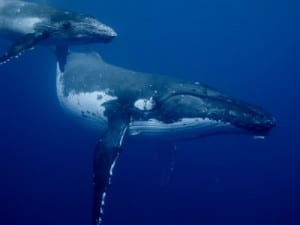Tripatini
the world's smartest travel social network
Having a Whale of a Time in Golfo Dulce, Costa Rica
 Starting in August, the tranquil blue waters of the Golfo Dulce, between the Piedras Blancas National Park and the Osa Peninsula in southern Costa Rica, will witness one of the most amazing spectacles in the animal kingdom – the thousands-of-miles-long migration of Pacific Humpback Whales.
Starting in August, the tranquil blue waters of the Golfo Dulce, between the Piedras Blancas National Park and the Osa Peninsula in southern Costa Rica, will witness one of the most amazing spectacles in the animal kingdom – the thousands-of-miles-long migration of Pacific Humpback Whales.
The annual migration of endangered Pacific Humpback Whales is a remarkable journey of nearly 10,000 miles from near the North and South Poles to warm tropical waters to breed and give birth. As winter turns the seas to ice in Antarctica, southern Humpback Whales swim north to the Great Barrier Reef of Australia and as far as Costa Rica, where they can be seen between August and October. Northern Humpbacks travel from Alaska and British Columbia south to warmer waters by Mexico, Hawaii and Central America from December to March.
You can see humpback whales in Costa Rica along the southern Pacific Coast, from the Ballena National Marine Park just south of Dominical down through Cano Island Biological Reserve off Drake Bay and into the Golfo Dulce.
 Known as a tropical fjord, the Golfo Dulce is a critical habitat for humpbacks and is vital to the species’ survival, according to the Center for Cetacean Research of Costa Rica (CEIC).
Known as a tropical fjord, the Golfo Dulce is a critical habitat for humpbacks and is vital to the species’ survival, according to the Center for Cetacean Research of Costa Rica (CEIC).
Once hunted to near-extinction, Humpback Whales are an endangered species with international government-protected status. Humpback whales are named for the prominent hump on their backs. The baleen whales can grow to be 56 feet long and weigh up to 40 tons, with distinctive, long black and white pectoral fins (flippers) that reach about one-third of their body length. They live a long life to about 45-50 years old. Babies (or “calves”) are born after an 11-12 month gestation period, which explains why some years when the whales are visiting tropical waters they are breeding and other years they are giving birth.
 In the Golfo Dulce, the migrating whales are almost strictly from the Southern Hemisphere. Males concentrate at the entrance to the Gulf waiting to breed with available females, while pregnant females swim into the shallow waters of the Gulf’s interior to birth and nurse their young.
In the Golfo Dulce, the migrating whales are almost strictly from the Southern Hemisphere. Males concentrate at the entrance to the Gulf waiting to breed with available females, while pregnant females swim into the shallow waters of the Gulf’s interior to birth and nurse their young.
Humpback whales are easy to spot since they live at the ocean’s surface, both in the open ocean and in shallow coastline waters. They swim slowly and are known as the “acrobats of the sea” for their great displays of jumps and splashes (breaching). Males are famous for singing long, complex mating “songs” – sequences of squeaks, grunts, and other sounds – during their migration and when in breeding areas.
Whale watching in Costa Rica
 Don’t miss the 2014 whale-watching season in the Golfo Dulce of Costa Rica. The best place to stay for whale-watching action is Playa Nicuesa Rainforest Lodge. Located in the pristine rainforest on a remote beach of the Golfo Dulce, the award-winning Costa Rica eco-lodge offers boat tours of the Gulf to see the whales, resident pods of dolphins, and other marine life like sea turtles and seabirds.
Don’t miss the 2014 whale-watching season in the Golfo Dulce of Costa Rica. The best place to stay for whale-watching action is Playa Nicuesa Rainforest Lodge. Located in the pristine rainforest on a remote beach of the Golfo Dulce, the award-winning Costa Rica eco-lodge offers boat tours of the Gulf to see the whales, resident pods of dolphins, and other marine life like sea turtles and seabirds.
A TripAdvisor Certificate of Excellence winner, the rainforest lodge in Costa Rica has its own 165-acre private preserve bordering the Piedras Blancas National Park. It is a unique adventure travel destination by the Osa Peninsula.
Article by Shannon Farley
Videos
Groups
-
India
173 members
-
Tour Operators
873 members
-
Ireland
93 members
-
South Dakota
17 members
-
Azerbaijan
17 members
-
Shopping the World
55 members
-
Tech for Travel/Hospital…
87 members
-
Andorra
26 members
-
Online Corner
75 members
-
Minnesota
22 members
-
Backpackers & Hostels
84 members
-
Portugal
60 members
-
Turks and Caicos
26 members
-
Agritourism/Farmstays
72 members
-
Zambia
21 members
© 2025 Created by EnLinea Media.
Powered by
![]()
Badges | Report an Issue | Privacy Policy | Terms of Service
You need to be a member of Tripatini to add comments!
Join Tripatini